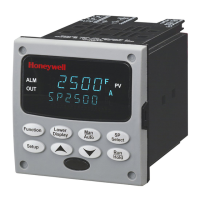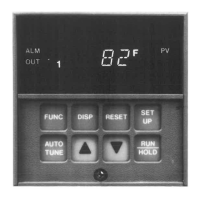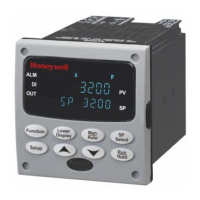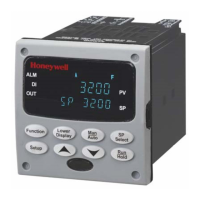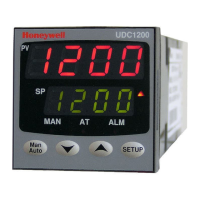19
Approval Body Options:
CE, FCC, IC (Standard);
UL Listed (Optional): UL61010-1, 3rd Edition. UL61010-2-201, 2nd
Edition;
CSA Certified (Optional): CAN/CSA-C22.2 No. 61010-1-12+AMD1
Four Sets of Tuning Constants - Four sets of PID parameters can be
configured for each loop and automatically or keyboard selected.
Data Security: Five levels of keyboard security protect tuning,
configuration, and calibration data, accessed by a configurable 4-
digit code. Nonvolatile EEPROM memory assures data integrity
during loss of power.
Diagnostic/Failsafe Outputs: Continuous diagnostic routines detect
failure modes, trigger a failsafe output value and identify the failure
to minimize troubleshooting time.
High Noise Immunity: The controller is designed to provide reliable,
error-free performance in industrial environments that often affect
highly noise-sensitive digital equipment.
Accutune III™: This standard feature provides a truly plug and play
tuning algorithm, which will, at the touch of a button or through a
digital input, accurately identify and tune any process including
those with deadtime and integrating processes. This speeds up and
simplifies start-up plus allows retuning at any setpoint. The
algorithm used is an improved version of the Accutune IITM
algorithm found on earlier controllers. Two possibilities are now
offered when tuning your process: Fast Tune and Slow Tune.
Fast Tune: will tune the process in such a way that the temp is
reached faster, a slight overshoot will be allowed.
Slow Tune: will minimize overshoot, but it will take more time for the
process temperature to reach the target setpoint.
Heat/Cool (Duplex Tune): will automatically tune both the heating and
cooling sides of the process.
Fuzzy Logic: This standard feature uses fuzzy logic to suppress
process variable overshoot due to SP changes or externally induced
process disturbances. It operates independently from Accutune III
tuning. It does not change the PID constants, but temporarily
modifies the internal controller response to suppress overshoot. This
allows more aggressive tuning to co-exist with smooth PV response.
It can be enabled or disabled depending on the application or the
control criteria.
Chapter 2 - Introduction

